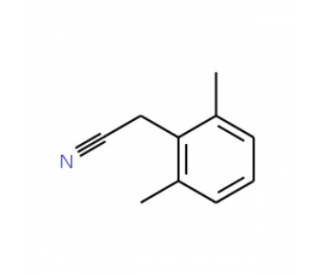详细说明
Species Reactivity
Human
Specificity
Detects human Integrin beta 2/CD18 in direct ELISAs and Western blots. In direct ELISAs, no cross-reactivity with recombinant human Integrin beta 1 or recombinant mouse Integrin alpha 5 is observed.
Source
Monoclonal Mouse IgG1 Clone # 212701
Immunogen
Mouse myeloma cell line NS0-derived recombinant human Integrin beta 2/CD18
Gln23-Asn700
Accession # AAA59490Formulation
Supplied 0.2 mg/mL in a saline solution containing BSA and Sodium Azide.
Label
Alexa Fluor 647
Applications
Recommended
ConcentrationSample
Flow Cytometry
0.25-1 µg/10 6 cells
Human peripheral blood mononuclear cells
Please Note: Optimal dilutions should be determined by each laboratory for each application. are available in the Technical Information section on our website.
Preparation and Storage
Shipping
The product is shipped with polar packs. Upon receipt, store it immediately at the temperature recommended below.
Stability & Storage
Store the unopened product at 2 - 8 °C. Do not use past expiration date.
Background: Integrin beta 2/CD18
Integrin alpha X beta 2, also called CD11c/CD18, p150/95 or complement receptor type 4 (CR4), is one of four beta 2 integrins. The non-covalent heterodimer of 150 kDa alpha X/CD11c and 95 kDa beta 2/CD18 integrin subunits is expressed on macrophages, dendritic cells and hairy cell leukemias, with lower amounts on other myeloid cells and activated B, NK and some cytotoxic T cells (1‑7). Like other integrins, alpha X beta 2 has multiple activation states (3). In the presence of divalent cations and "inside-out" signaling, alpha X beta 2 is fully active and extended. The alpha X vWFA or I-domain, which contains the adhesion sites, forms the N-terminal head region with the alpha X beta-propeller and the beta 2 vWFA domain (1, 8). In the inactive state, the heterodimer flexes in the center at the alpha X thigh and calf domains and beta 2 I-EGF domains, impeding access to adhesion sites (1). The 1088 aa human alpha X/CD11c ECD shares 70‑76% aa sequence identity with mouse, rat and canine alpha X while the 678 aa human beta 2/CD18 ECD shares 81‑83% aa sequence identity with mouse, rat, cow, dog, goat, sheep, and pig beta 2. Potential alpha X isoforms containing 719 and 725 aa (as compared to full-length 1163 aa alpha X) lack the vWFA domain and the N-terminus. Active alpha X beta 2 shares some adhesion partners with alpha M beta 2/CD11b/CD18, including complement opsonin fragment iC3b, ICAMs, vWF and fibrinogen, and is expressed on many of the same cells (4‑11). However, alpha M beta 2 activity is often constitutive, while alpha X beta 2 activity requires cell activation (4‑7). alpha X beta 2 also binds osteopontin, Thy-1, plasminogen, heparin, and proteins with abnormally exposed acidic residues (11‑16). The adhesion events are important for proliferation, degranulation, chemotactic migration, and phagocytosis of complement-opsonized particles (5, 6, 9, 11, 12, 16). Mutations of beta 2, especially in the vWFA domain, cause leukocyte adhesion deficiency (LAD-1) and susceptibility to bacterial infections (17).
References:
Corbi, A.L. et al. (1987) EMBO J. 6:4023.
Kishimoto, T.K. et al. (1987) Cell 48:681.
Hynes, R.O. (2002) Cell 110:673.
Arnaout, M.A. (1990) Blood 75:1037.
Postigo, A.A. et al. (1991) J. Exp. Med. 174:1313.
Beyer, M. et al. (2005) Respir. Res. 6:70.
Nicolaou, F. et al. (2003) Blood 101:4033.
Vorup-Jensen, T. et al. (2003) Proc. Natl. Acad. Sci. USA 100:1873.
Bilsland, C.A.G. et al. (1994) J. Immunol. 152:4582.
Pendu, R. et al. (2006) Blood 108:3746.
Sadhu, C. et al. (2007) J. Leukoc. Biol. 81:1395.
Schack, L. et al. (2009) J. Immunol. 182:6943.
Choi, J. et al. (2005) Biochem. Biophys. Res. Commun. 331:557.
Gang, J. et al. (2007) Mol. Cells 24:240.
Vorup-Jensen, T. et al. (2007) J. Biol. Chem. 282:30869.
Vorup-Jensen, T. et al. (2004) Proc. Natl. Acad. Sci. USA 102:1614.
Kishimoto, T.K. et al. (1987) Cell 50:193.
Entrez Gene IDs:
3689 (Human); 16414 (Mouse); 309684 (Rat)
Alternate Names:
959 beta subunit precursor)10; CD18 antigen; CD18; CD18beta 2; cell surface adhesion glycoprotein (LFA-1; CR3; Integrin beta 2; integrin beta-2; integrin, beta 2 (antigen CD18 (p95), lymphocyte function-associated antigen 1;macrophage antigen 1 (mac-1) beta subunit); integrin, beta 2 (complement component 3 receptor 3 and 4 subunit); ITGB2; LAD; LCAMB; leukocyte cell adhesion molecule CD18; leukocyte-associated antigens CD18/11A, CD18/11B, CD18/11C; LFA-1 beta; LFA-1; MAC-1 beta; MF17; MFI7; P150; p150,95 beta











 粤公网安备44196802000105号
粤公网安备44196802000105号